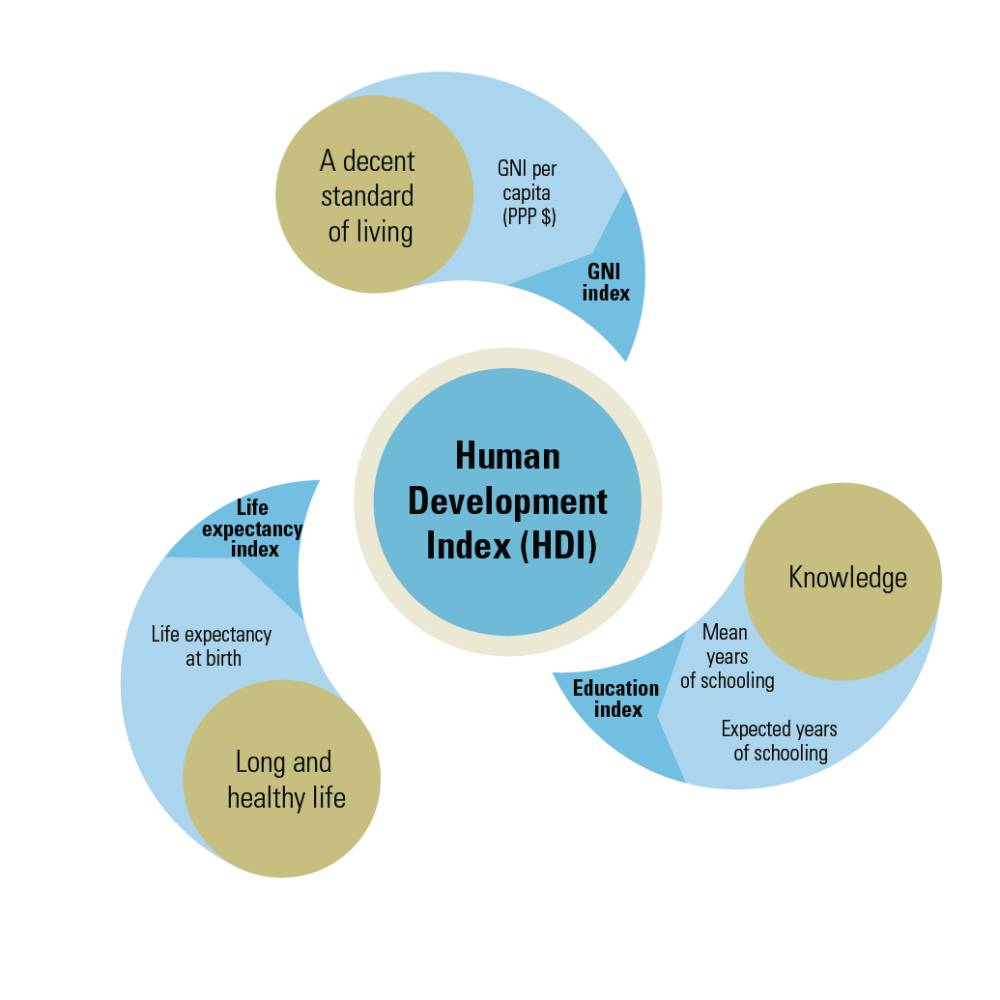
The Human Development Index (HDI) is a composite indicator of development. Composite means that it is composed of some different things; in this case, HDI is composed of Gross National Income per capita (GNIpc), life expectancy, literacy rates and years of schooling. That’s four different development indicators in one, and that’s one reason why it’s a better development indicator to use than just a single one such as GNIpc.
Another reason why it’s a good way to compare development in different countries is that the components of HDI are not just economic like GNIpc is. Life expectancy gives us an indication of the health of the people in a country. Life expectancy is not defined as the age to which one can expect to live, but instead, it is the average age of death. Therefore a country with high infant mortality (many children dying before their first birthday) with have a low life expectancy, even though people there do grow old.
Literacy rates and years of schooling both show the levels of education in a country. Therefore a good HDI shows that whilst the country may have a good level of income, its government spends that income on health and education, at least on improving safe water supply and primary school classes.
HDI is given as a number between 0 and 1. The closer to 1 the number is the more developed the country is, and the countries are usually ranked from high to low. There are 196 countries in the world, so, for example, Norway has the highest HDI at 0.949 and is ranked at number 1, the United Kingdom is ranked number 16 and has an HDI of 0.910. At the less developed end of the index are the Soloman Islands, ranked at 156 with an HDI of 0.515; and Central African Republic is ranked number 188, with an HDI of 0.352.

Hello,nice share.
LikeLike